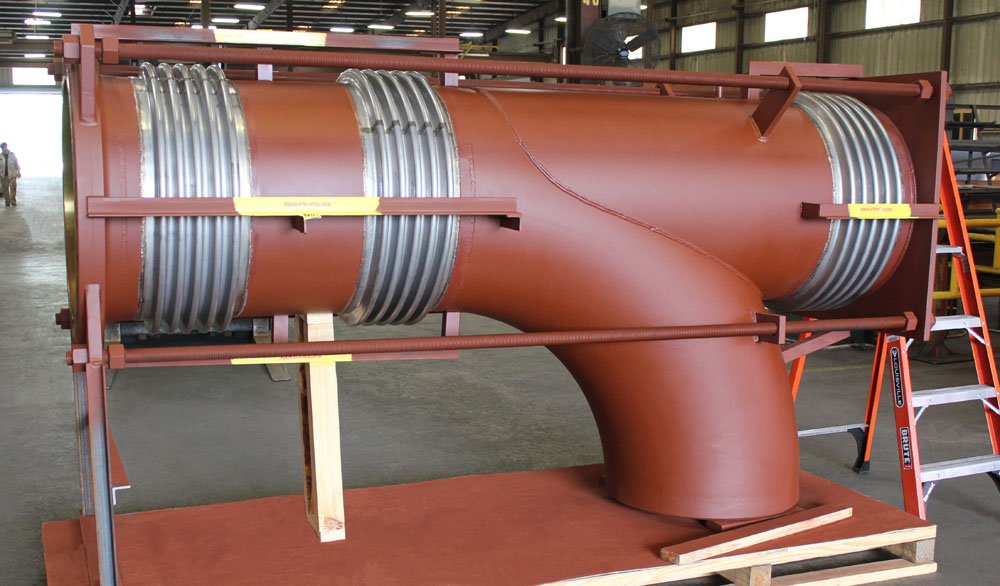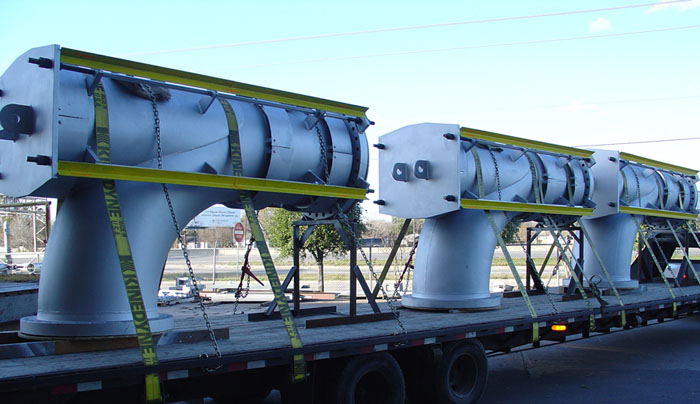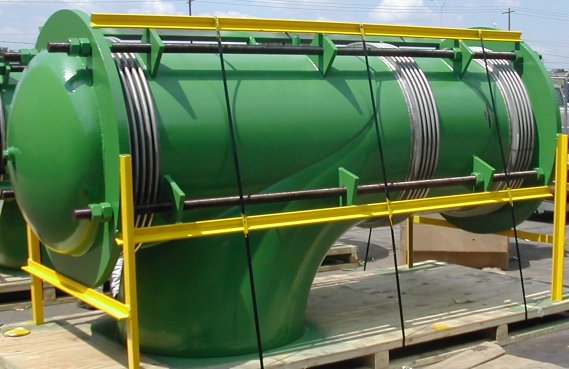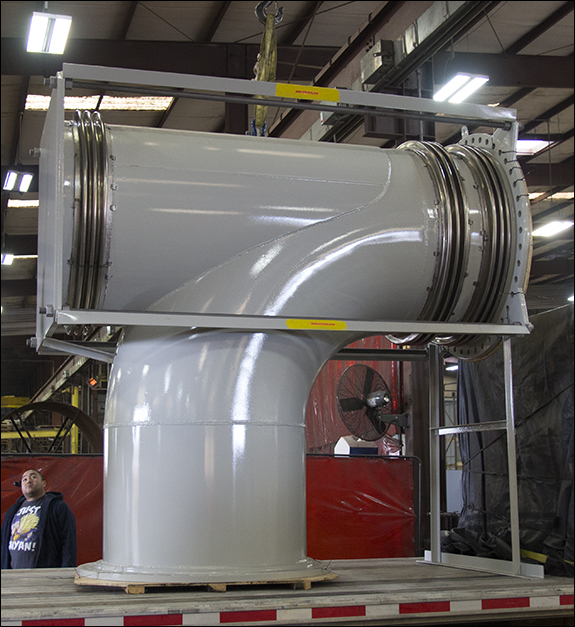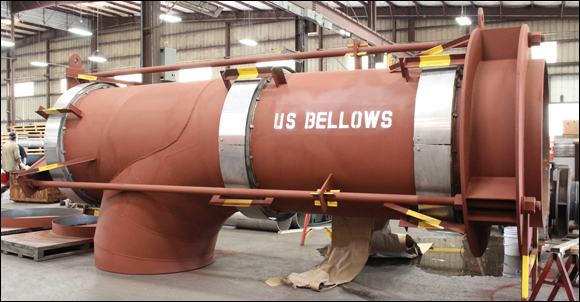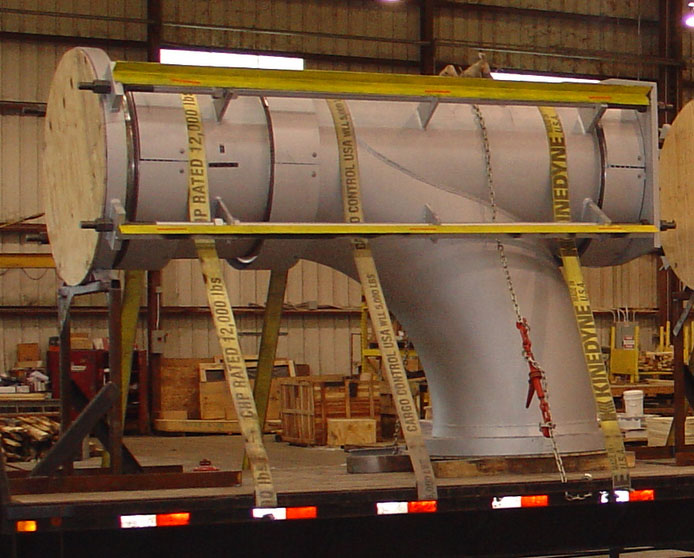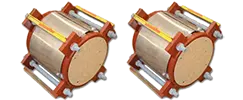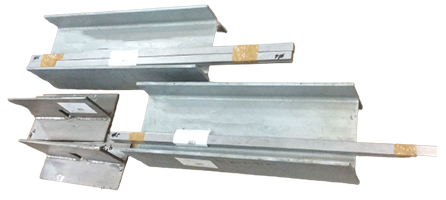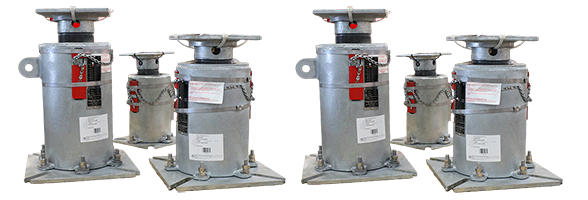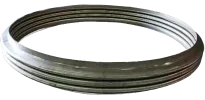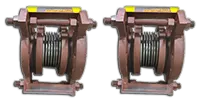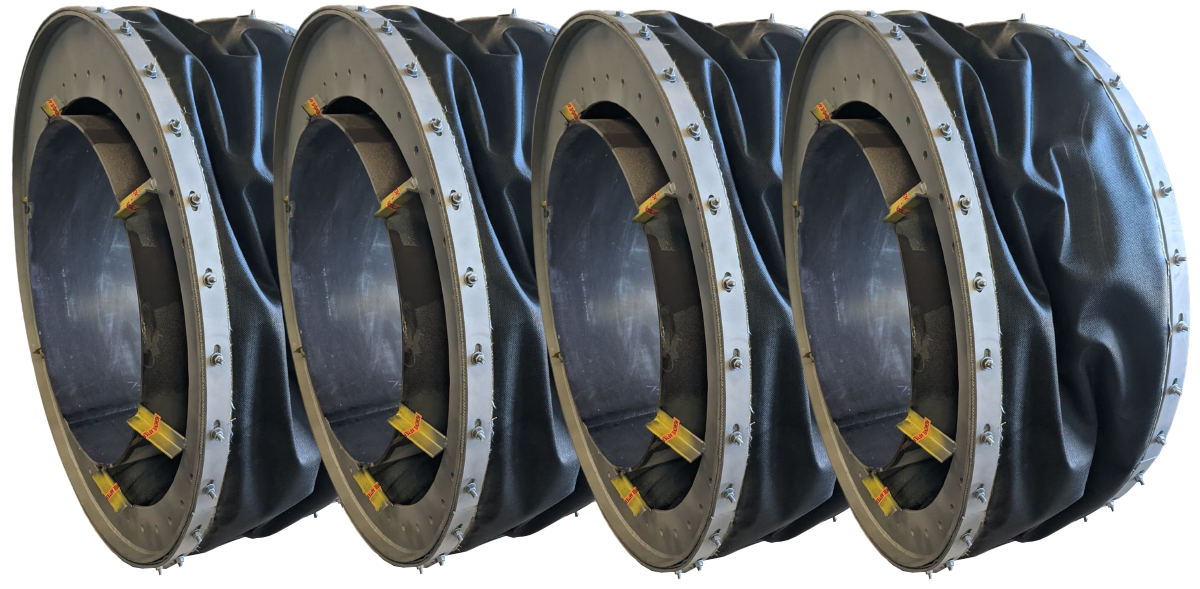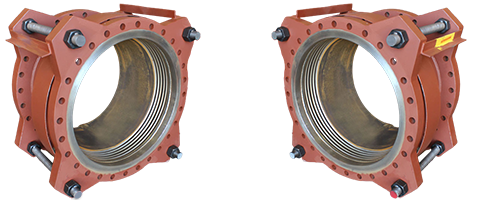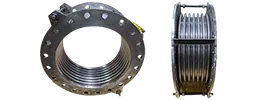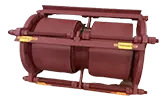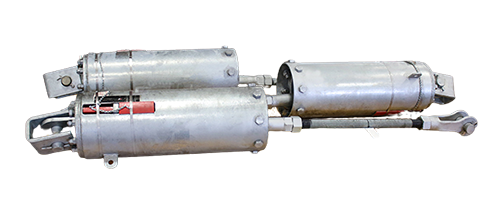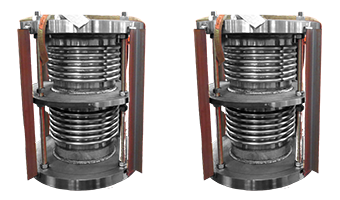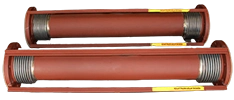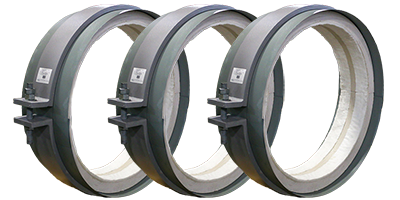Elbow Pressure Balanced Pipe Expansion Joint Extended Information
This type of pipe expansion joint is really a combination of several types. Its purpose is to retain and balance the pressure thrust so that main anchoring of the pipe or adjacent equipment is not required, and forces and movements on attachment flanges of delicate equipment, such as turbines, are kept to acceptably low levels. The deflections to be accepted are handled by the proper type of pipe expansion joint, which normally, is a tied universal type to accept lateral movements. However, the pressure balanced elbow is usually required because axial deflections are also present. In order to accept these movements, a bellows is added beyond the elbow with the same cross-sectional area as the ones in the universal section. This balancing bellow is connected by the tie rods to the pipe beyond the universal section; in this way, the pressure thrust is contained as tension in the tie rods. The section of the expansion joint between the tie rods, which includes the elbow, is now free to move axially, with the only resistance being a function of the spring rates of the bellows. Because of their arrangement, however, the spring rate of the entire expansion joint is the sum of the spring rates of the balancing and the universal bellows. This is a constant volume system, in that when the universal end compresses, the balancing end extends the same amount. All of the lateral deflection is absorbed by the universal end, and there is no lateral deflection imposed on the balancing end. Therefore, the balancing bellows is almost always a single bellows type.

